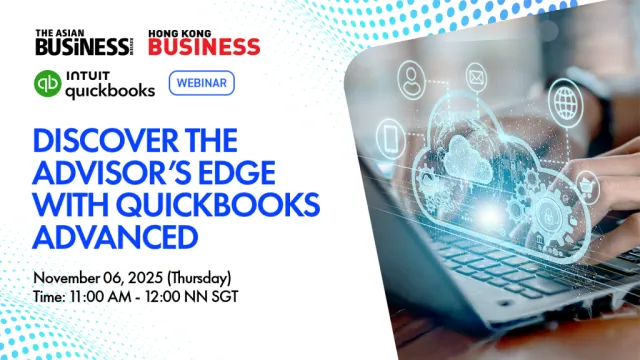
Deloitte’s Mark Lian sheds light on strategic recovery during the COVID-19 crisis
For Mark, the COVID-19 crisis could be an opportunity for companies to make significant upgrades to infrastructure and processes.
Mark has over 22 years of professional service experience focusing on the technology industry. He started his career at Deloitte Houston office in 1999 and relocated to Deloitte Seattle office in 2002. During this period, he worked at Deloitte’s Capital Markets practice, where he had served major technology and energy clients in various audit support and advisory projects—including implementation of US GAAP/IFRS accounting literatures, Sarbanes Oxley readiness assessment, decomposition and valuation of structured transactions, and assessment of risk controls.
He moved back to China in 2007 as part of Deloitte’s global deployment’s program to help local Chinese technology companies list their shares in the US, HK, and PRC capital markets. Since then, he has been involved in the listing process of many prominent technology companies in China, and has developed a deep understanding on market dynamics, innovative technologies, and digital transformation that helped him assist the technology companies in enlarging business operations, expanding overseas markets, and planning a blueprint for growth.
As one of the judges in this year’s China Technology Excellence Awards, Mark shares some of the tech trends in accelerating the industry, how companies can boldly position themselves to thrive in the future, as well as his insights on how the present crisis will shape a company’s road to digital transformation.
Crisis presents opportunities for businesses, even during the COVID-19 pandemic. What do you think are these opportunities, and how will they shape technology and/or digitisation in the future?
COVID-19 has brought an unexpected challenge to all industries. Along with its evolution, companies need to transit into the next two phases: Recover – during which an organisation emerges stronger from its response; and Thrive – in which the organisation prepares for and shapes the “new normal”.
Companies should prepare for future opportunities and threats. As business and strategy become increasingly inseparable, companies should consider dynamic strategies in their businesses, such as the change in supply chain, AI industrialisation, machine data revolution, security management, digital workplace transition, etc., to embrace technicalisation and digitisation in the future.
The strategic recovery: The COVID-19 crisis could be an opportunity for companies to make significant upgrades to infrastructure and processes. A more transparent and dynamic supply chain, higher-performing remote workforces, and migration to public clouds are potential strategic solutions for companies to succeed.
- Upgrades to infrastructure and process: For all its pain points, the COVID-19 crisis can be an opportunity to make significant upgrades to infrastructure and processes that may be outdated.
- Create transparency across supply chains: Companies should consider digitising their supply chains to gain visibility throughout their supplier networks.
- Enable high-performing remote workers: The mandatory shutdowns make it hard to develop products with in-person teams. Companies should enable more regular remote capabilities and flexible working schemes. The crisis can ultimately lower costs and ensure greater resilience without sacrificing performance.
Thrive longer term: as organisations recover, it is essential to cast an eye on the future competitive landscape, considering which changes brought by the crisis will constitute a “new normal.” Company leaders need to get ahead of these trends, whether technological or not, to help the organisations thrive in the intermediate terms. Some long-term priority areas are listed as below:
- Human-centered design of customer experience
- Bridge physical and digital worlds to deliver new value
- Establish trust as a key business value
Here are nine tech trends we think will play a key role in accelerating the industry:
- Strategy engineered: technology choices bear a greater role in organisation strategy as business and technology strategy become increasingly inseparable.
- Core revival: pioneering IT leaders are embracing new approaches, technologies, and business cases to revitalise core assets as the C-suite increasingly views technology modernisation as an imperative to enable strategic change.
- Supply unchained: virtualised data is used to transform supply chain cost centers into customer-focused, value driving networks as pioneering companies use advanced digital technologies.
- Machine data revolution: data must be tuned for native machine consumption, not humans. Organisations need to rethink data management, capture, and organisation.
- Zero Trust-Never Trust, Always Verify: companies should focus on creating a more robust and resilient security, simplify security management, and improve end-user experience.
- Rebooting the digital workplace: organisations are embracing technology to optimise individual and team productivity, collaboration and the employee experience at large as fundamental shifts to the digital workplace take place.
- Digital meets physical: organisations recognising the desired human experience strikes a balance between making traditional physical human experiences more digital, and digital experiences more physical.”
Transitioning to a digitised company is challenging, especially during this time. What would your advice be to companies that are just starting their digital transformation journey?
First of all, digital services and technology must be fostered through integrated skills in innovation, human-centered design, digital technology, risk and overall leadership. It should be implemented in strategic, creative and adaptive ways.
There are three things to consider when undertaking a digital transformation journey:
- Build a digital platform to support a high-touch vs. self-serve client experience.
Companies should drive a digital transformation that cultivates trust by offering high quality of customer service. The ability to listen intently and with empathy through digital communication will be necessary in order to find new ways to add a human touch to each conversation.
Companies should also look at the customer segments and their overall customer value chain, then determine the components which need to be kept in-person and where they can be made more self-serve. For example, the millennials are comfortable using digital and robo-advisory platforms.
- Determine the digital platform strategy.
Companies should consider some factors such as the organisation's structure, as well as the cultural flexibility and openness across the organisation for new technology and then make a decision on whether to choose a platform that covers the entire value chain or pick multiple platforms that each serve the specific areas of the value chain.
- Apply a portfolio approach to funding and managing transformation.
The overall goal in a transformational journey should be to construct a portfolio of initiatives that produce the highest overall return in relation to the firm's appetite for risk. They should utilise the tools and capabilities to manage the initiatives as an integrated whole and AI for total innovation.”
Which do you think is more important when it comes to introducing new technology in a company? The hardware and software? Or human beings who can easily adapt—and have the necessary skills or talents—to go with these changes?
We think strategy is the most important when introducing new technology in a company. Here are three key strategic opportunities for the companies to boldly position themselves to thrive in the future.
- Redoubling digital transformation efforts, with an emphasis on improving cloud infrastructure, data and analytics capabilities, cyber security, and business model transformation. Companies should start by first using the digital capabilities to make processes more effective and efficient; then shift their focus to more advanced digital capabilities like AI to further boost innovation and their competitive advantage.
- Reorienting and reskilling the workforce to optimise remote work capabilities and take full advantage of advanced technologies such as artificial intelligence (AI).
- Reexamining where and how manufacturing happens, with a focus on improving transparency, flexibility, and resiliency. Many companies manage a complex network of suppliers that could contain hundreds of high-tech parts and components providers about whom they may have little information. To better utilise their tools, companies need to redesign their key business processes and use decision support technologies, process automation, and integrated communication technologies to drive real-time action. Companies can bring everything together into an integrated digital supply network.
What are your expectations about this year's entries in the China Technology Excellence Awards?
The China Technology Excellence Award is a commendation for the outstanding operated and innovative companies in the technology industry. Despite what we have faced these years, especially from the outbreak of COVID-19, we can see there are still many companies taking advantage of digital transformation opportunities in this difficult situation.
The semiconductor industry, 5G technology, AI, cloud computing, e-commerce, remote office, short video, live broadcast and other fields in China are showing strong growth. The mature large-scale enterprises are accelerating the pace of transformation, and many emerging companies are pursuing opportunities in vertical areas. This year's entries convinced me of this trend. They ensure the purpose of reducing business operation costs and increasing efficiency, simplifying our daily needs and bringing social value. Through this year's awards, I believe more innovative abilities and solutions will be inspired. More prominent companies are forthcoming!

















 Advertise
Advertise








